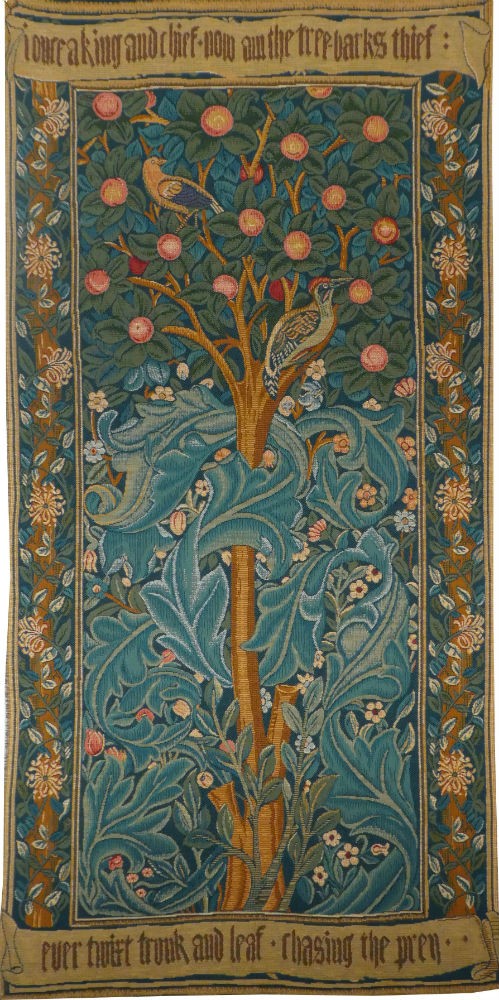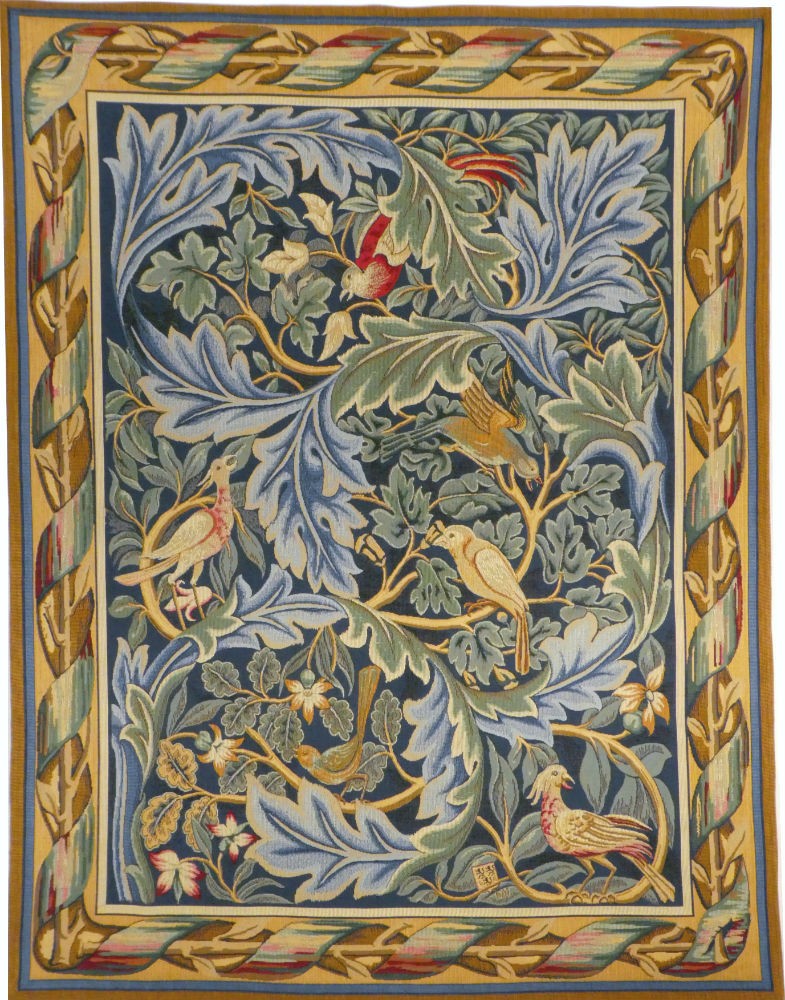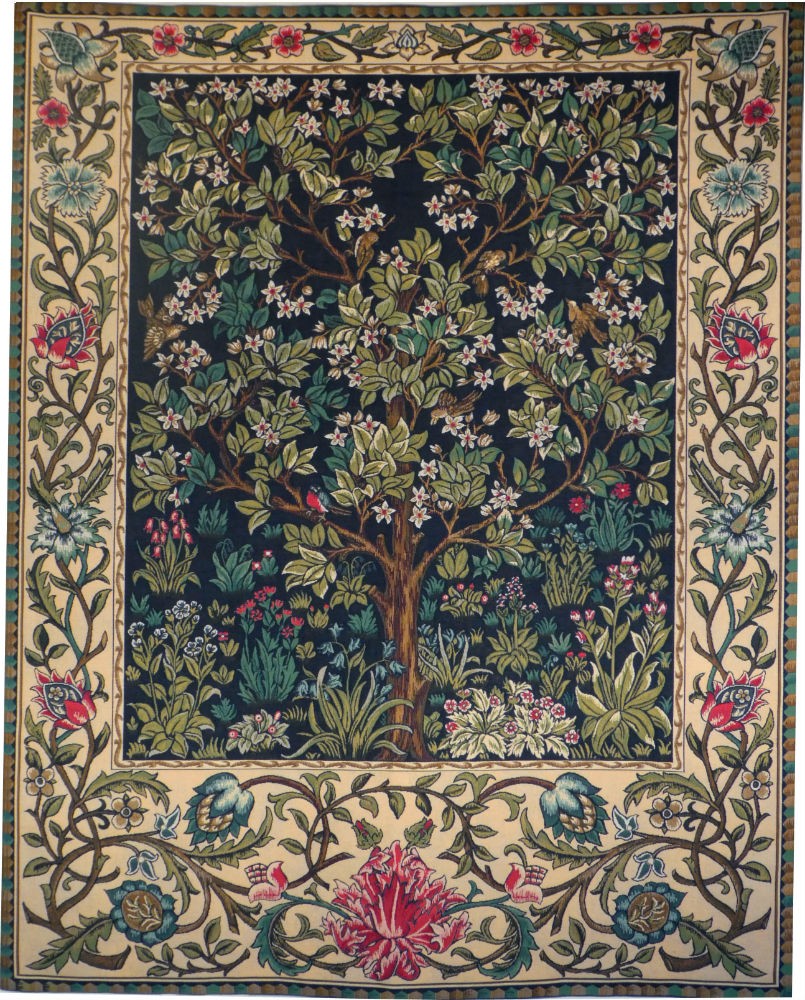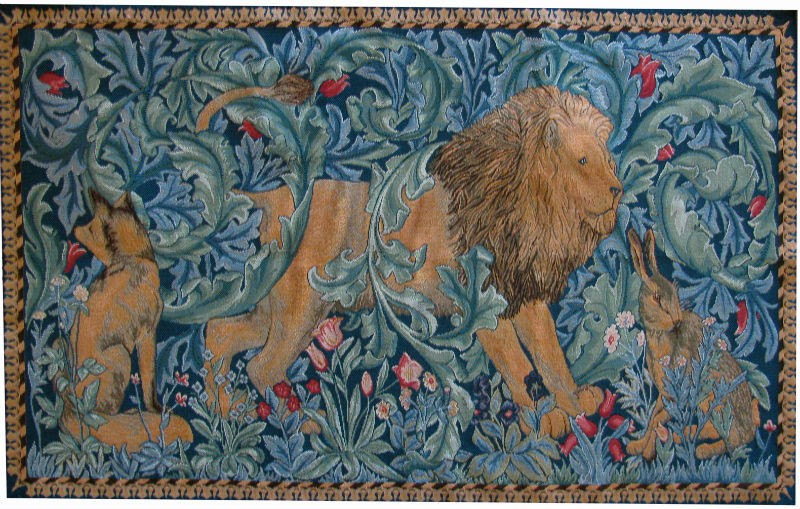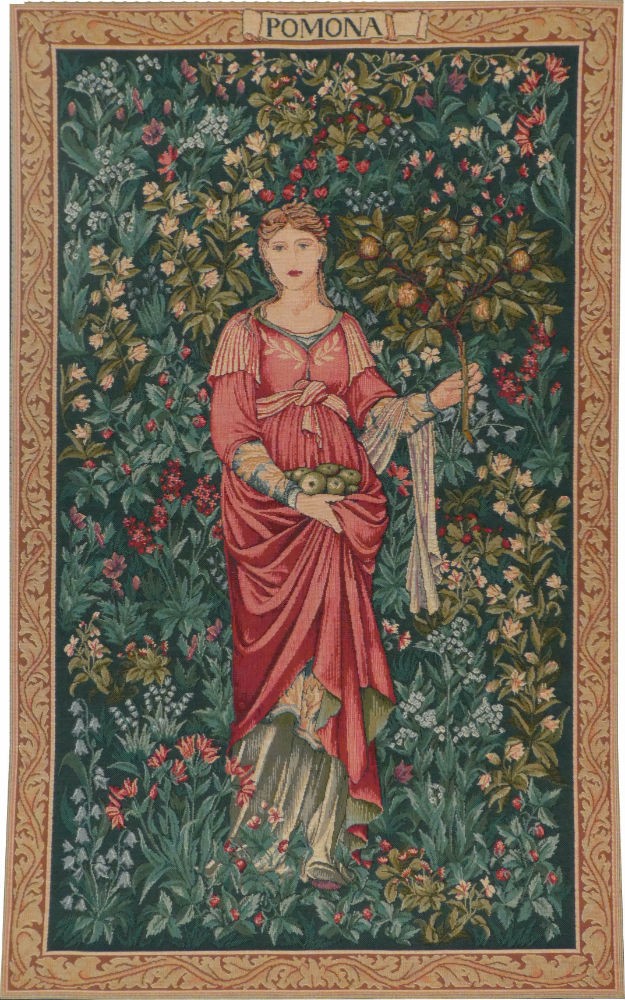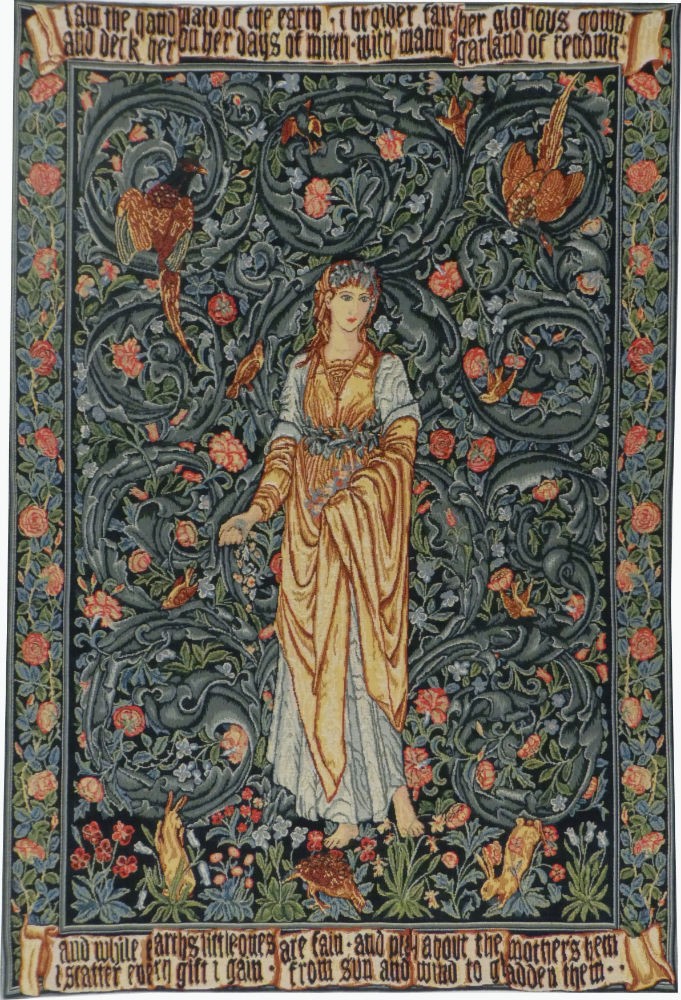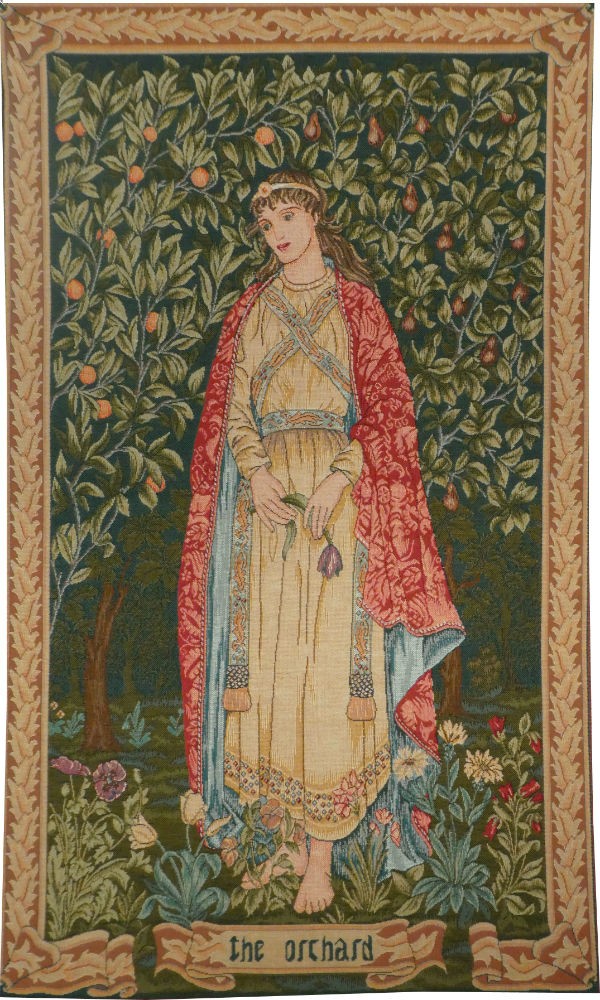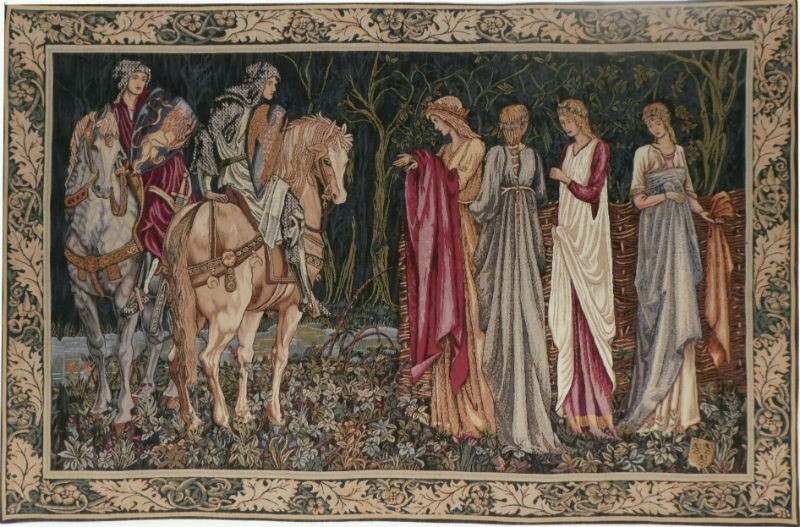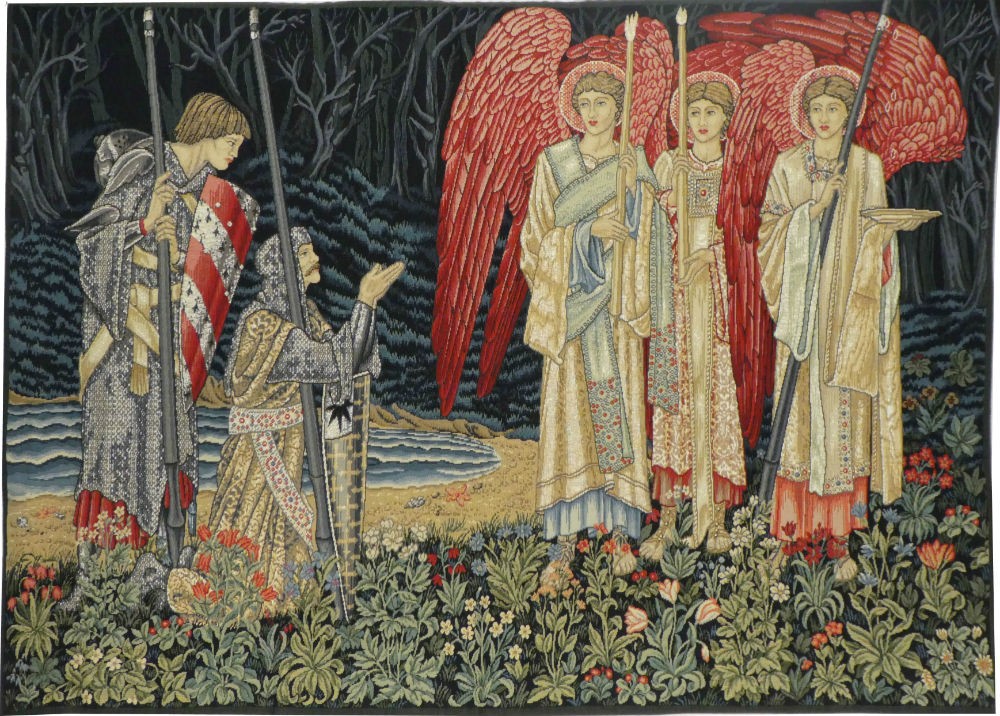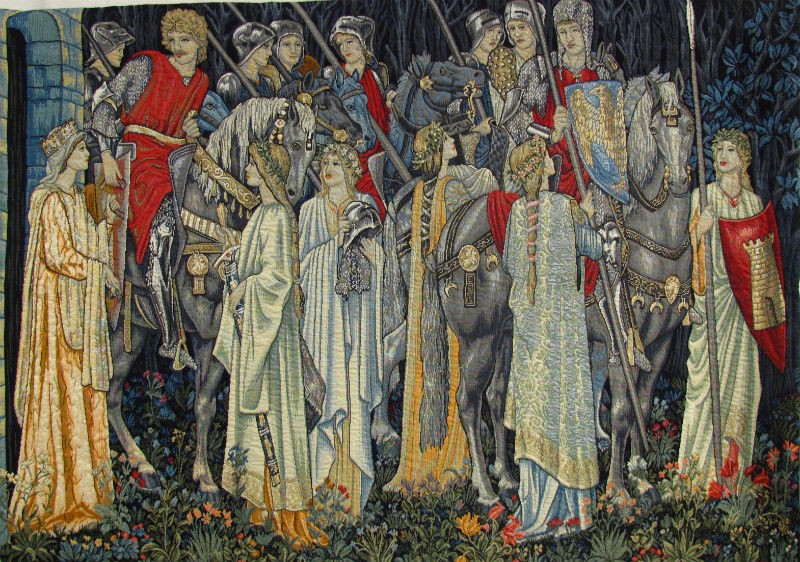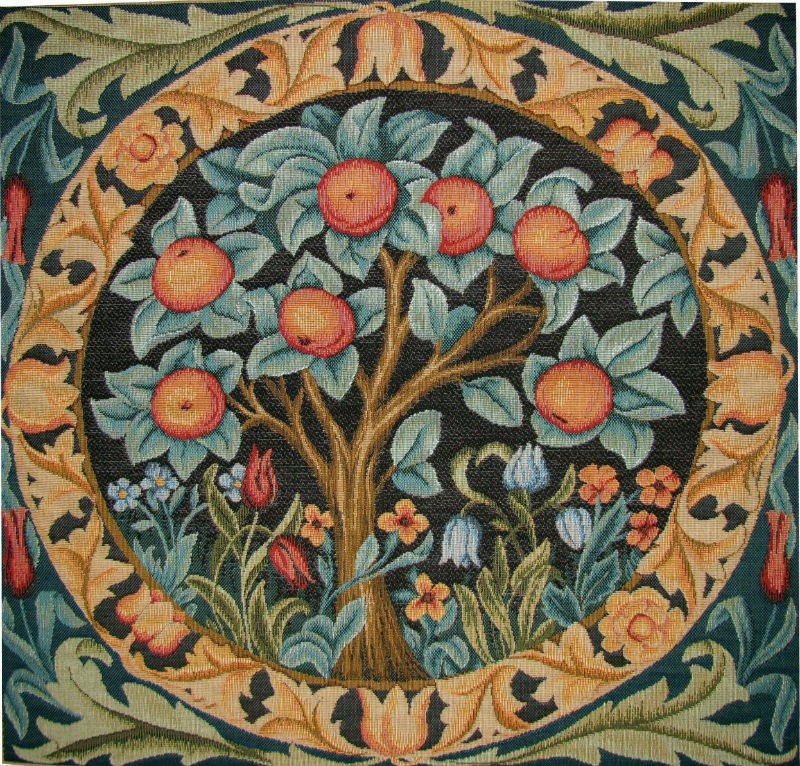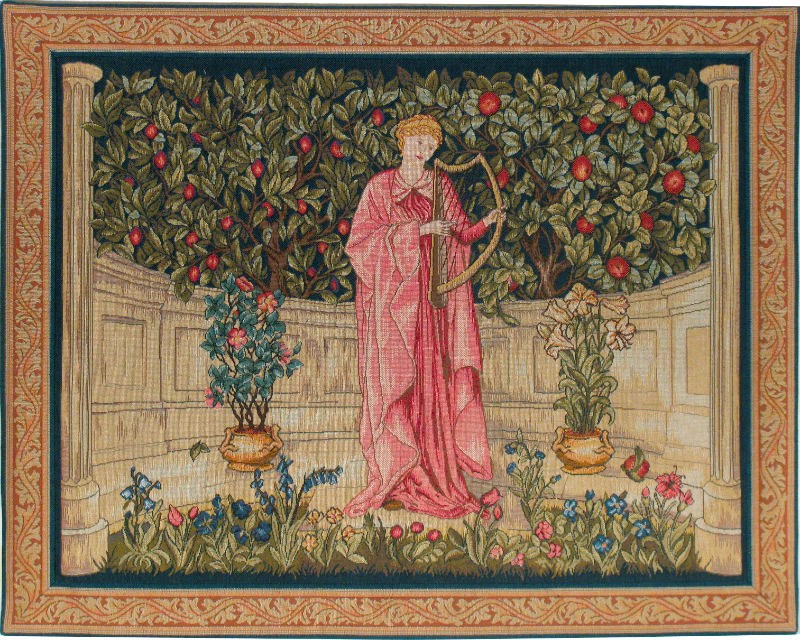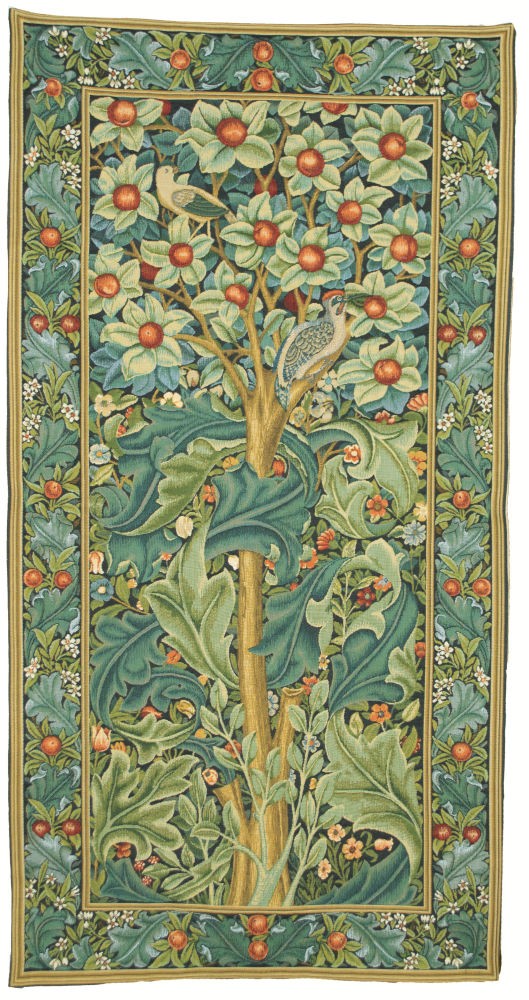Oriental Rugs Dictionary
William Moris Tapestries
William Morris tapestries are a major legacy left by this English designer, artisan, poet and social reformer who transformed many of the applied arts of his day. Along with his life-long friend Edward Burne-Jones, who also designed some of our tapestries, Morris used past influences and the natural world around him to break out of the Victorian stuffiness of his time. Inspired by artists of medieval times, by contemporary visionaries like John Ruskin and by fellow artists such as the Pre-Raphaelite Brotherhood he led a renaissance in the arts. These included painting, architecture, textiles, ceramics, stained glass, printing, wallpaper and, of course, tapestries. William Morris called tapestry weaving “the noblest of the weaving arts”. His enthusiasm extended to learning to weave tapestries from a fourteenth century French manual. From this he designed a loom in 1879 which he had placed in his bedroom at Kelmscott Manor. He would even spend hours with his arms in vats experimenting with natural dyes. Later Morris & Co established a tapestry workshop at Merton Abbey under John Henry Dearle.
